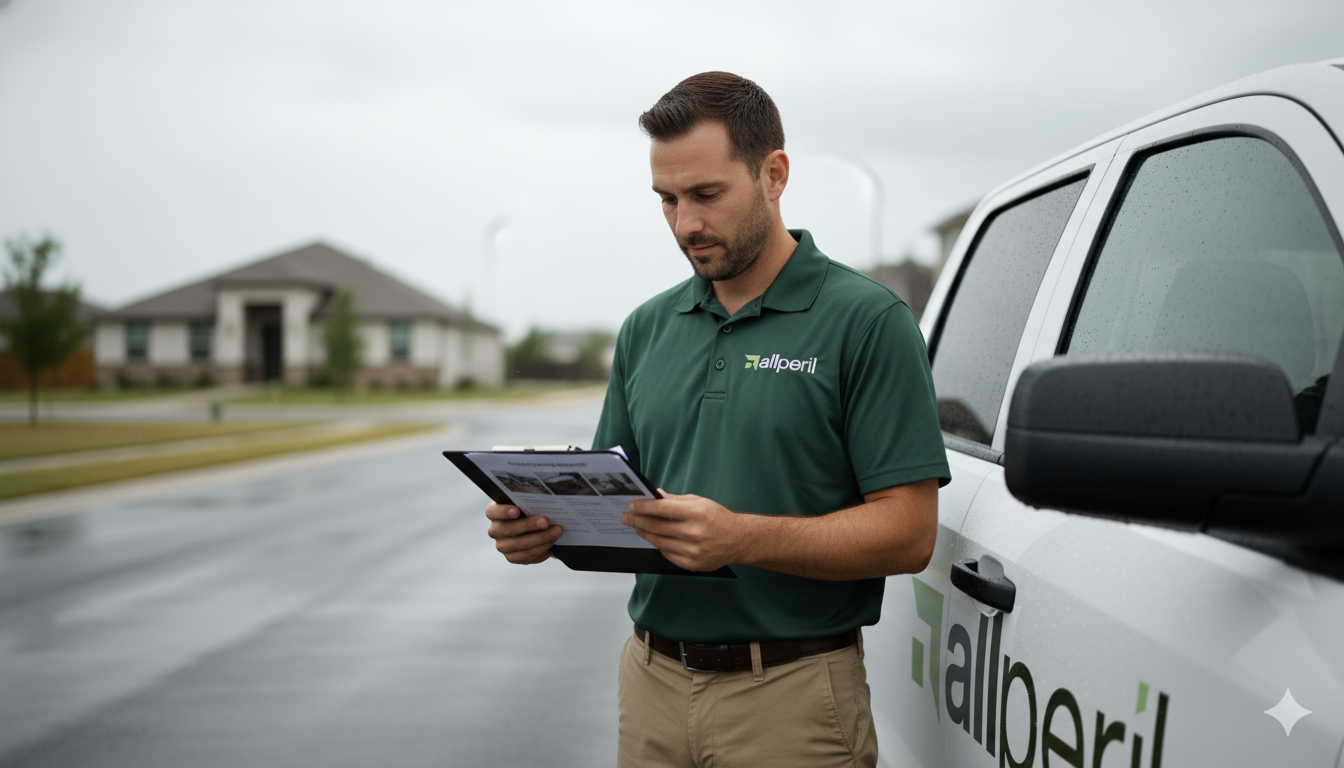
In storm restoration, clear documentation isn’t just paperwork—it’s protection.
It ensures every party involved in the recovery process—policyholders, contractors, and insurance carriers—works from the same information.
When documentation is organized and transparent, misunderstandings decrease, claims move faster, and trust grows. It’s the foundation of efficient storm recovery and fair claim outcomes.
Documentation connects every step of the process—from inspection to repair completion. It helps clarify what happened, what needs to be done, and what’s been approved.
Here’s how clear documentation protects everyone involved:
When a contractor defines the scope of work in writing, it sets the tone for accountability. Carriers and homeowners understand exactly what’s being repaired, which materials are used, and why. This reduces confusion and minimizes back-and-forth communication.
When everyone has access to the same documentation, there’s less room for assumptions. Carriers can review verified data, contractors can defend their estimates, and homeowners can see proof of progress—all of which build long-term trust.
Accurate documentation is key to successful claim resolution. It helps insurers verify damage, justifies line items in estimates, and provides a clear trail for audits or supplements. Organized files make approvals faster and disputes less frequent.
Strong documentation habits protect both contractors and policyholders.
Here are key practices to maintain consistency and accuracy across every claim:
Keep all claim files, estimates, and photos in one accessible system.
Use standardized naming conventions for reports, upload timestamps, and keep communication logs centralized. This ensures nothing is misplaced or duplicated.
Documentation isn’t just paperwork—it includes communication.
Summarize phone calls, track emails, and log carrier requests. Regularly updating all parties keeps everyone aligned and prevents small miscommunications from becoming major issues.
Always include:
Thorough record-keeping not only protects contractors and carriers—it also gives homeowners confidence that their property was properly restored.
Why is documentation important in storm restoration?
It creates transparency, reduces disputes, and keeps claims organized from start to finish. Clear documentation ensures everyone is working from verified facts.
What types of documentation should be prioritized?
Damage assessments, photo reports, contractor estimates, communication records, and compliance documentation should always come first.
How can stakeholders maintain clear documentation?
Use a shared or centralized system, update notes after every milestone, and ensure every file includes dates, names, and explanations.
What can homeowners do to help?
Take dated photos of storm damage, keep copies of communications with the insurer, and confirm all contractor estimates are stored digitally.
In storm restoration, documentation is more than paperwork—it’s proof, protection, and peace of mind.
For contractors, it prevents reopens and disputes. For carriers, it streamlines approvals. And for homeowners, it builds trust that the recovery is handled with care and transparency.
At All Peril, we make documentation the backbone of every claim we coordinate—because clarity protects everyone.
.jpg)
.jpg)